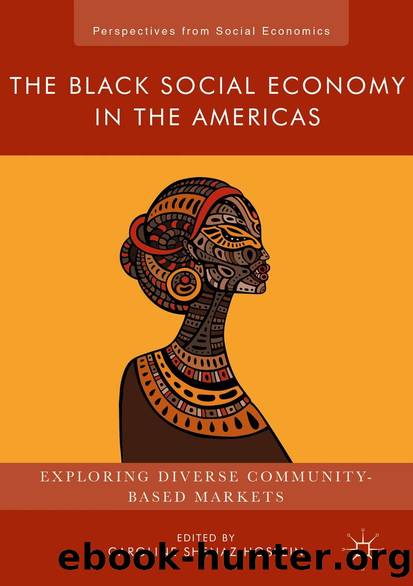The Black Social Economy in the Americas by Unknown

Author:Unknown
Language: eng
Format: epub
ISBN: 9781137600479
Publisher: Palgrave Macmillan US
6.3 Electrical Infrastructure: Work and Collective Labor
A bare bulb lit the cantina, an open-air bar, where a half dozen men and women danced to accordion-heavy vallenato music on the evening of Wednesday, 28 September 2011. The men bought drinks one round at a time until the lights flickered and the power went out. The music and dancing stopped. A chorus of frogs could be heard until the owner of the cantina pulled the cord of a motor and the gasoline-powered electric generator whirred to life. The lights came on; the music started; and the men and women continued dancing. The generators, imported from China, were expensive to own and to run, but were the only source of electricity until a small group of men could hike into the forest to fix a blown over power line or remove a downed tree branch.
The New York-based Chocó Pacific Mining Company operated a hydroelectric dam on the Andágueda River at the town of La Vuelta throughout much of the twentieth century. The dam, in its heyday in the middle of the twentieth century, provided electricity to the massive dredges that the mining company used to dig into rivers and chew up gardens to dredge for gold. The mining company town of Andagoyá, 30 kilometers to the south of the hydroelectric dam, is full of rusting metal hulks of company buildings and wood-framed workers’ quarters with screened-in porches. The company’s dredges, its local and international workers, and its dam are now long gone. All that remains are the electricity pylons, devoid of their copper wires, that continue their march due south, and the large turbine building, which still stands on the Andágueda River where the dam had been: the detritus of a twentieth-century moment of electrical infrastructure undone by a river, neglect, and politics (on the Chocó Pacific Mining Company, see Leal 2008, 2009).
Although the dam provided power to the mining company for decades, many rural villages in the Chocó still have no electricity; Don Alfonso ’s village was only connected to the electricity grid at the beginning of the twenty-first century, when the power utility strung cable along many dozens of wooden poles over many kilometers through the forest. Don Alfonso and his neighbors run fridges, freezers, televisions, stereos, cooking elements, and lights. Every few weeks, however, rainstorms blow over tree branches or electricity poles in the forest and cause power outages. To repair the fragile electrical connection, a handful of men from various villages would hike into the forest.
Mauricio and two other men from neighboring villages often did the hike, which could take 12 hours. They only went when there had been no rain for a few days, so the forest trails were passable and not too muddy. They hiked the narrow path, swam across two rivers, and looked for a downed branch or a fallen pole. When they found the break, they confirmed the cable had no current—they called ahead to another town to disconnect the line—and then repaired the electricity line by removing the fallen branch or cutting down a tree to make new pole.
Download
This site does not store any files on its server. We only index and link to content provided by other sites. Please contact the content providers to delete copyright contents if any and email us, we'll remove relevant links or contents immediately.
The Goal (Off-Campus #4) by Elle Kennedy(12433)
Kathy Andrews Collection by Kathy Andrews(10519)
Diary of a Player by Brad Paisley(6866)
What Does This Button Do? by Bruce Dickinson(5527)
Assassin’s Fate by Robin Hobb(5236)
Big Little Lies by Liane Moriarty(4880)
Pale Blue Dot by Carl Sagan(4001)
Sticky Fingers by Joe Hagan(3454)
The Heroin Diaries by Nikki Sixx(2931)
The Death of the Heart by Elizabeth Bowen(2901)
Beneath These Shadows by Meghan March(2718)
The Help by Kathryn Stockett(2703)
Confessions of a Video Vixen by Karrine Steffans(2674)
How Music Works by David Byrne(2525)
Jam by Jam (epub)(2489)
Harry Potter 4 - Harry Potter and The Goblet of Fire by J.K.Rowling(2416)
Strange Fascination: David Bowie: The Definitive Story by David Buckley(2367)
Petty: The Biography by Warren Zanes(2237)
Darker Than the Deepest Sea by Trevor Dann(2206)
